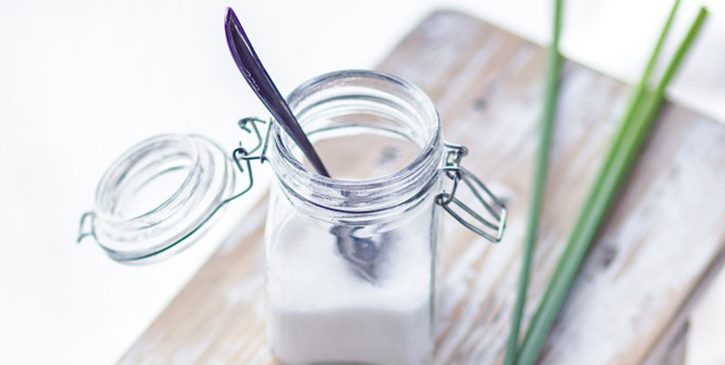
Sugar shock: 9 foods that pack a sugar high
We’ve always known eating too much sugar contributes to weight gain and tooth decay, but since the concept of ‘toxic sugar’ hit the mainstream, it’s now considered the number one dietary villain.
With sharply rising rates of obesity and diabetes, the evidence is steadily mounting: sugar is the contributing factor to most chronic diseases, including obesity, heart disease and type 2 diabetes. The reason is this: sugar is made up of fructose and glucose. Fructose is more likely to be converted to fat via the liver as it can’t be used by the body as fuel like glucose can. Fructose then creates triglycerides – which are the bad fats we want to avoid, and the ones causing most of the health problems.
Think you can just skip that teaspoon of sugar in your coffee or avoid the odd cookie? It’s not that easy. Most of our sugar comes hidden in the foods often marketed as ‘natural’ or ‘low-fat’, which make it possible for the average Australian to unwittingly consume up to 40 teaspoons of sugar per day. That’s more than 10 times the daily average. The World Health Organisation recommends sugar makes up between 5%-10% of our total daily energy intake, which is equivalent to around 12g of sugar (maximum 3 teaspoons) per day for an adult.
So, which foods are the biggest culprits, and what are the alternatives?
1 Low Fat Yoghurt
Beware low fat products where the fat has been replaced with sugar, designed to add back the flavor and texture, as well as increase the ‘addiction’ factor. For example, Nestle D’Lite Vanilla Sensation 99% fat-free yoghurt has 13.5g sugar per 100g – a better alternative would be a natural yoghurt like Jalna Biodynamic with 4.1g of sugar per 100g.
2 Fruit & Nut Bar
Just because a product has no ADDED sugar doesn’t mean it has NO sugar. These bars are almost always high in sugar and relatively low in nutrients. With a Special K Fruit and Nut Bar containing 33.5g sugar per serve, you’re better off having an apple (10g) and a handful of almonds for the real deal.
3 Fruit juice
Fruit juice, whether it’s 100% fruit juice or not, is the quickest way to drinking a whole lot of calories and concentrated fructose without the fibre that actually fills you up. A glass of apple juice for example has 24g sugar per 250ml glass. Try an actual piece of fruit, with its fibre, vitamins and minerals intact – a small banana has just 12g.
4 Protein bars
Protein bars tend to be full of highly processed, even artificial ingredients and fillers. If it’s more than 200 calories or 8 grams of sugar, you may as well eat a chocolate bar. With the focus on high protein and low carb, gym junkies can be unsuspectingly eating up to a whopping 25g sugar per 100g in some popular brands. Always check the label or try a Quest bar for example, which is only 3.3g of sugar per 100g. As an added bonus, most flavours use natural sugar alternatives like stevia.
5 Muesli
A bowl of muesli can easily contain 500 or more calories—and that’s before you even add the milk. Try to stick to high-fibre varieties with low sugar, and always check the recommended portion size on the label. Carman’s Natural Bircher Muesli has 16.1g sugar per 100g. Try buying a brand that is fruit free and unsweetened, and add in some fresh fruit yourself.
6 Liquid Breakfasts
Drinking a pre-made breakfast might seem convenient, but it’s rarely healthy. For example, Sanitarium’s UP&GO Strawberry Liquid Breakfast contains 19.3g of sugar per serving (350ml pack)…and no actual strawberries. Try blending own smoothie instead with milk, unsweetened Greek or natural yoghurt, fresh fruit and a handful of nuts – and get the benefit of real ingredients and nutrients to help sustain you.
7 Trail mix with dried fruits
This type of food is easy to overeat when buying in bulk, as portioning can be difficult to control. A Coles brand fruit and nut trail mix bulk pack contains 23.5g of sugar per 100g. A better choice would be putting together your own small serving of unsalted nuts and seeds, served with a small piece of fresh fruit instead.
8 Sauces & dressings
How can something savoury possibly need sugar? Indeed, most salad dressings, tomato sauces and Asian pre-made sauces and marinades list sugar as their second or third ingredient. For example, a Praise Italian Salad Dressing which is advertised as 100% fat free has 10.1 g sugar per 100g. Try make your own salad dressing with a tablespoon of olive oil, a teaspoon of dried Italian herbs and a squeeze of lemon or dash of vinegar.
9 Peanut Butter
The fat in peanut butter is healthy monounsaturated and polyunsaturated fats – so no need to opt for ‘light’ versions of peanut butter, which will probably still include sugar (around 2g per tablespoon). Most commercial varieties such as Kraft and Sanitarium now come with no added sugar. Better still, try a natural organic variety from your local health food shop, or make your own nut butter at home with a food processor or a blender.




